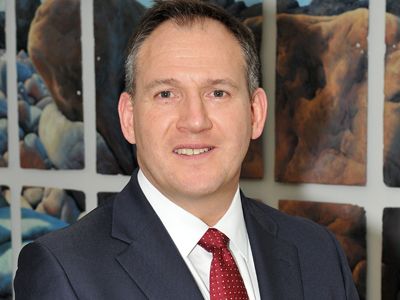

New report outlines five practical steps to achieve a more diverse board for competitive advantage
New report outlines five practical steps to achieve a more diverse board for competitive advantage
Time for Change: Recruiting for Europe’s Boardrooms report was launched last week by EY to help businesses increase representation of women on boards and, in so doing, achieve business growth.
The release of this report coincides with EY’s support of the recent Advancing Women in Politics & Public Life breakfast seminar hosted by the Jersey Community Relations Trust in Jersey. The event explored the current state of women’s representation in politics. Keynote speaker, Dame Tessa Jowell, took the debate beyond politics into the boardroom and assessed business’ commitment to gender equality.
On 1 July of this year, EY announced its rebranded name and also unveiled its new logo and adopted Building a Better Working World as its purpose and tagline. As part of their strategy to achieve a better working world, they are committed to enhancing the role of women, not only in the boardroom but throughout businesses. With a recruitment rate which is usually an even split between men and women, EY remains committed to playing their part in empowering women and enabling them to achieve their full potential.
With European Commission (EC) statistics showing only marginal growth in female board representation in recent years, the report – based on interviews with board members, headhunters, business leaders and advocates of corporate governance throughout Europe - exposes current barriers and highlights the need for fresh, innovative thinking in the process of making appointments.
It reveals the dangers inherent in “groupthink” at the top of businesses and of the need for businesses to better understand and reflect customers’ wishes.
Five practical steps are identified in the report to improve boardroom recruitment:
1. Structure
Realign the composition of the board with the evolving needs of the business, looking at issues such as numbers and profile of non-executive directors, duration of service and sector-specific needs. Consider rotating non-executive directors regularly and appointing individuals with a wider range of skills. This can help open up the board’s approach to managing changes effectively and sharpen its awareness of future developments.
2. Process
Investigate ways of using headhunters more effectively, such as rotating recruitment firms and separating evaluation from search. Also consider hiring headhunters who represent the candidate, rather than the client. Advertise for boardroom posts, or use the growing number of databases to identify candidates who could bring new perspectives to the board.
3. Criteria
In order to create a larger pool of potential candidates, abandon the requirement that candidates “must have experience of a PLC board.” Instead, widen the search to include those with analytical skills, independence of thinking and a capacity to support as well as challenge.
4. Succession
Make a succession plan and keep it transparent. Then, in order to create a high-quality pipeline of talent, provide training for would-be non-executive directors by placing them on committees just below board level.
5. Support
Consider large cross-border businesses to collaborate in the creation of a “board secretariat” to provide support for all non-executive directors, in terms of resources as well as opportunities. Such an organization could potentially provide training for those who aspire to be non-executive directors, with their employers recommending them for participation in suitable courses. This is a radical idea, and one that would undoubtedly prove challenging to implement – but it may be one whose time has come.
Andrew Dann, EY’s Channel Islands Managing Partner, says: “At EY we recognise the benefits derived from engaging with diverse groups of individuals and in their contributions towards the decisions made in business. However, despite there being much highly accredited research supporting that diverse teams make better decisions, changes made to the gender balance in Boardrooms has been slow and this has been echoed in politics too. This report goes some way to supporting the debate further and helping organisations ensure better representation and composition so they achieve competitive advantage.”
Julie Teigland, EY’s EMEIA Accounts Leader concludes: “While gender is far from the only issue that needs to be considered, there is a widespread tendency to view boardroom appointments as a “closed shop”, where only candidates who have already served on boards are considered and personal networks are the primary tool used in recruitment. These factors work against efforts to broaden the base of experience and skills on company boards in order to equip them to meet the complex challenges of the modern business world.”